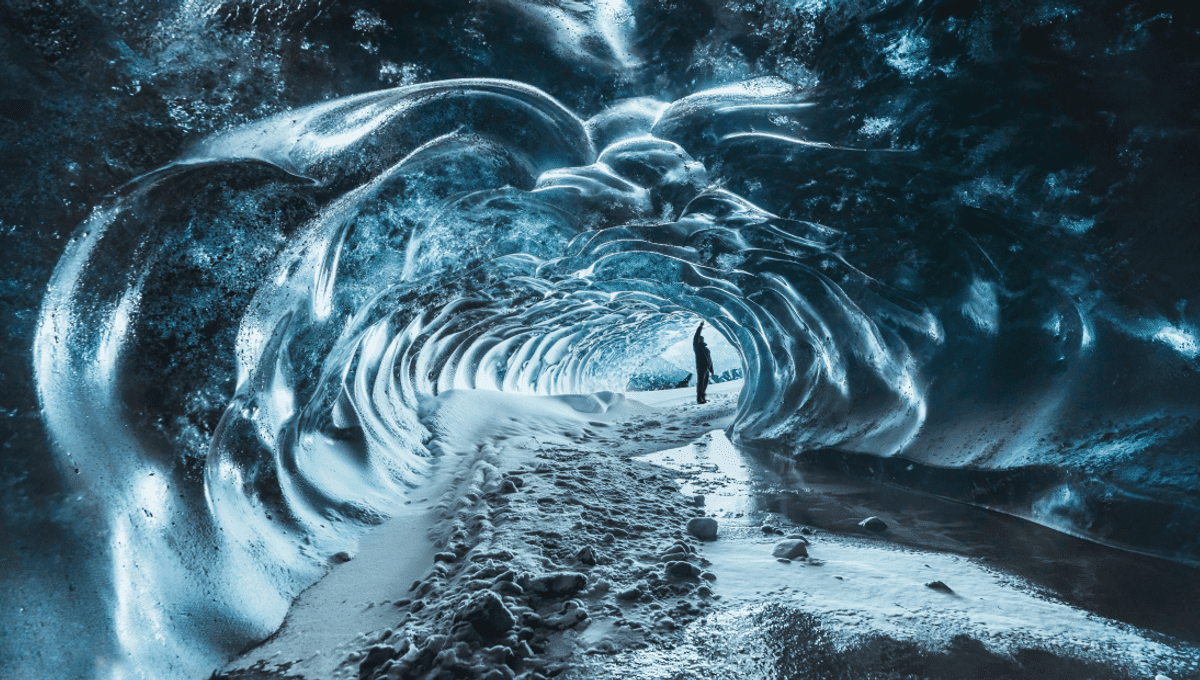
The largest glacier in Iceland can be found in the Vatnajökull National Park, and a “snake” lurks within it in the form of an ice cave. Its spectacular nickname is the Anaconda Ice Cave for its long and winding shape that mirrors that of the world’s girthiest snakes. It’s also known as Crystal Ice Cave for the smooth, blue ice that looks as if it was carved out of a Fox’s Glacier Mint.
Glacier caves get their uniquely blue coloration as a result of the pressure exerted by compacting ice. This pushes all the air out of it, which is what typically makes ice appear white rather than blue.
“It’s a result of a process that takes hundreds of years of snowflakes falling and compressing and re-crystallizing into ice, during which air bubbles trapped in the ice will be pushed out,” explains Arctic Adventures, which organize glacier hikes and ice cave tours in Vatnajökull National Park.
“When a chunk of ice is too dense to have any air in it, light travels deeper. The deeper the light travels, the more red-coloured spectrums it loses along the way, making the ice appear blue to our eyes. That’s why the glacier ice in Iceland has that magical, otherworldly shade of blue.”
The blue can also be intensified on the caves’ ceilings as light shines through, making it look as if the ice is glowing. The bubble-free blue sometimes meets with gray, white, and black volcanic ash deposits, creating complex and swirling color combinations that wind along the tunnels’ edges deep into the glacier.
Whichever nickname you prefer (let’s face it, it’s Anaconda), the winding tunnel is an example of a glacier cave. They differ from true ice caves (rock caves containing a lot of ice) because they’re formed when glacier ice melts creating waterways that carve out smooth tunnels.
This is why glacier caves like the winding Anaconda have such unique smooth edges, and with the guidance of local exploration companies, you can take a stroll right into the belly of the beast. Beautiful as they are, being made of ice means there’s a window in which you can explore Iceland’s glacier caves safely.
Traditionally, the season starts in November and ends in March as this is when the weather is cold enough to ensure the caves are stable. Come summer, the hotter weather can make the caves dangerous as melting resumes, but some remain frozen year-round.
The transient nature of Iceland’s glacier caves means they are constantly changing in appearance and structure, making each visit unique. It also provides a bit of fun for guides who at the end of the summer season get to head back into the glacier in search of newly-formed caves and tunnels.
Source Link: Anaconda Ice Cave: A Huge "Snake" Lurks Within Iceland’s Vatnajökull Glacier